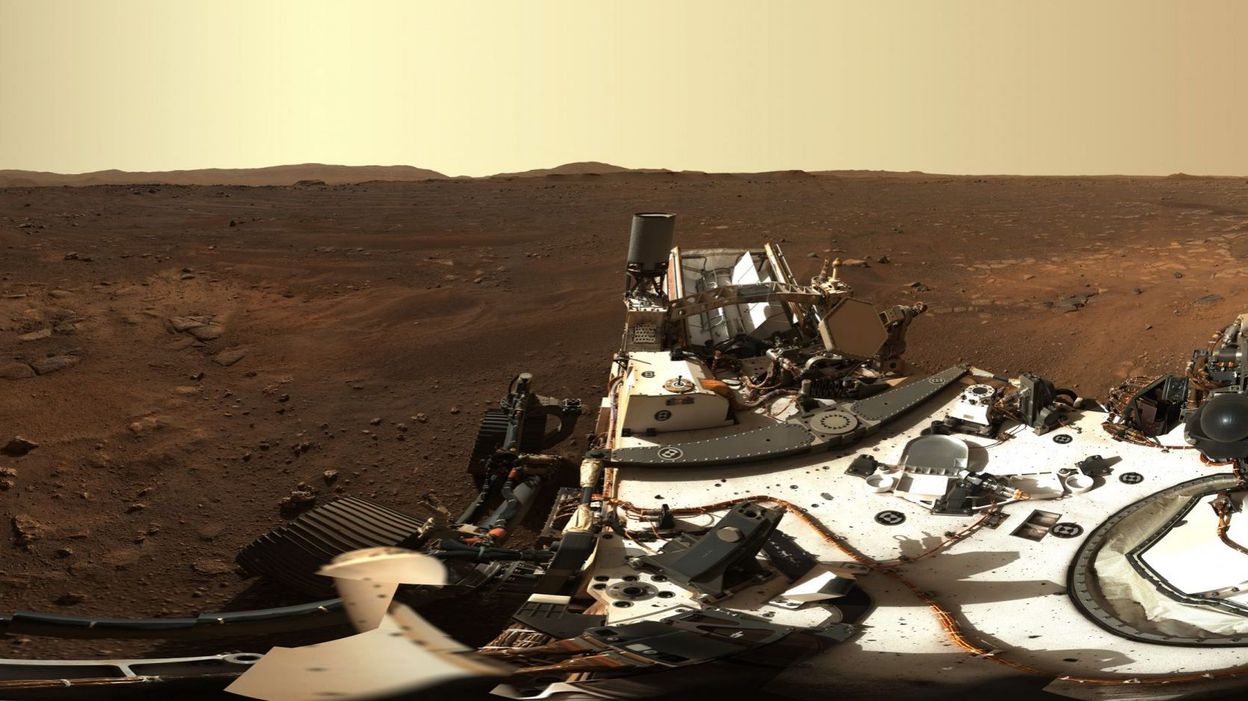

The team also hope to find rocks containing biosignatures, which are fossilised chemical and textural residues of life that can be found in sedimentary rocks. Perseverance will drill for interesting rock samples that show different features to help understand the geology of Jezero Crater. Keyron says the team have had 'operational readiness training' so that they were prepared for any scenario. Landing directly onto the Delta makes it harder to see the deposits, while too far away and the mission loses time steering the rover to the correct place. Ideally, scientists wanted it near the delta but not too far away or too close. Its landing was directed near the sedimentary deposits on the delta in the Jezero Crater. The rover's first few days were spent carrying out safety checks. Caroline comments that the mission is 'the result of much hard work, over many years by friends and colleagues', a testament to the close bonds forged around the rover. This is a career highlight for engineers and scientists involved, as many have been building up to this mission for their entire careers. Caroline describes the entry, descent and landing as 'seven minutes of terror' while UKSA Aurora Fellow Keyron Hickman-Lewis refers to this moment as 'seven minutes of anticipation', adding that it is 'decades of work held in a small window of time'. It can take up to half an hour to know if all is well. The team back on Earth endured a wait to find out if the landing was successful. Finally, a 'sky crane' system, similar to that used on the Curiosity rover, ensured that it safely reached the surface. Its exterior aeroshell protected it from the high temperatures caused by entry into Mars' atmosphere and which caused the outside heatshield to reach temperatures of 1,300☌.

On entry, it shed its cruise stage, which includes solar panels, radios and fuel tanks, then used a parachute and rockets to slowly lower itself onto the planet's surface. Perseverance is specially adapted to land successfully, however. The landing process is always a challenge - more than two thirds of missions sent to Mars have failed in their descent into the planet's thin atmosphere. Travelling at speeds of 79,000 kilometres per hour and across approximately 470 million kilometres, it has taken the Perseverance rover nearly eight months to reach its destination.


 0 kommentar(er)
0 kommentar(er)
